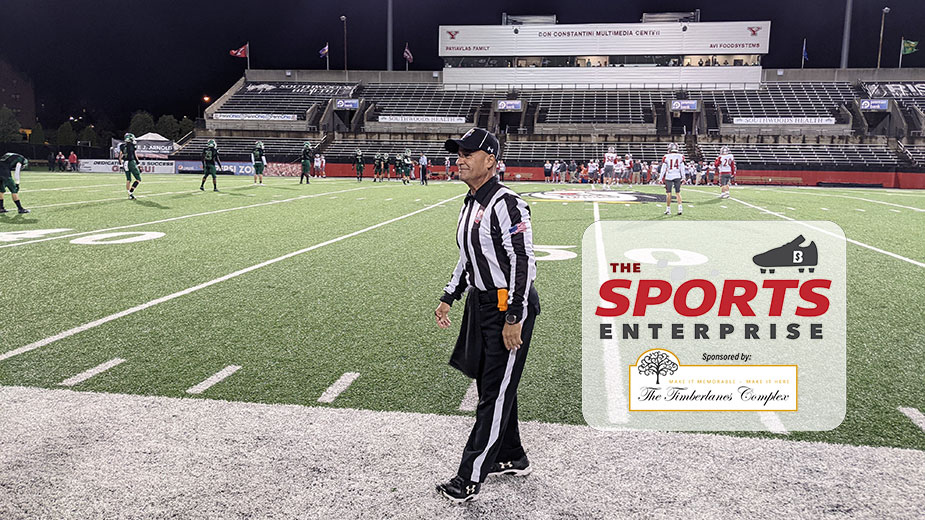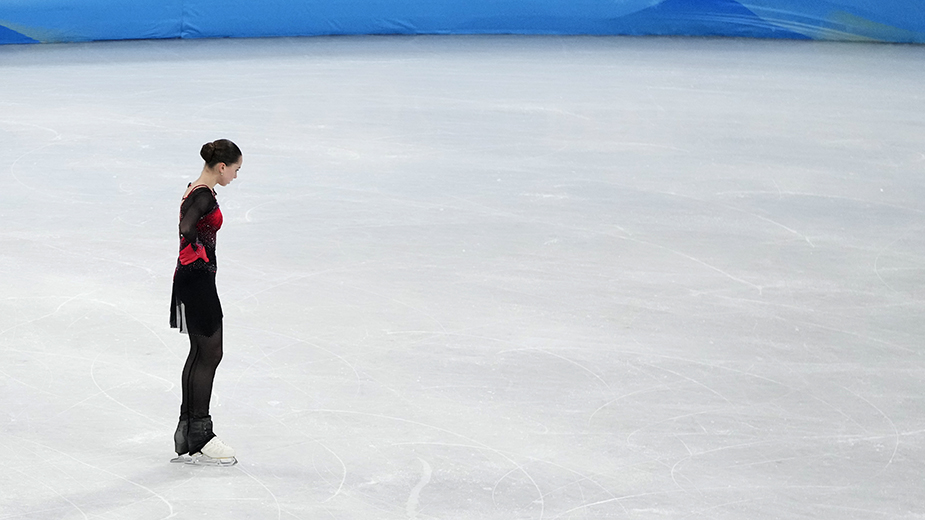As Mahoning Valley Sports Referees Age, Few Replace Them
YOUNGSTOWN, Ohio – A looming shortage of high school sports referees could lead to canceled games as soon as next year.
The number of officials across all high school sports in Ohio has dropped from 16,629 in the 2010-11 academic year to 14,901 in 2018-19, according to the Ohio High School Athletic Association.
“I think we need to step up our recruiting process to get referees. Because if something doesn’t change, there will be games here, probably next year or in the spring sports [season], where games will get canceled because there’s no officials,” says Cardinal Mooney High School boys soccer head coach Matt Britton.
Ursuline High School football head coach Dan Reardon says he sees the same officials at the high school and junior high levels. He’d like to see the talent pool increase as older, experienced officials retire.
The problem is not just in Ohio. Registration of officials across the country is down about 30% this year, says Karissa Niehoff, executive director of the National Federation of High Schools.
Verbal abuse by fans is a major reason for the decline, according to Niehoff.
“We need you to cheer for the student-athletes, not criticize the officials,” Niehoff says in an October video she sent to all member schools. “The profession is tougher than we might think. We must recognize that officials do their best out there. Every person has a role to play to ensure the success of high school sports.”
BEHIND THE NUMBERS
High school sports officials are independent contractors paid through the hosting school during the regular season, and by the OHSAA in the postseason.
Brad Ditullio has been officiating football for the past 26 years and has called more than 400 games in his career. He says the average pay is $70 per game and $140 during the playoffs.

The Mahoning Valley Athletic Conference does its best to attract officials, says Tim Cope, athletics director of Champion Local Schools. The conference consists of 16 schools from Portage, Trumbull, Columbiana and Mahoning counties.
“I know we tried to stay a dollar or two higher than the other leagues so it may entice the officials to want to come to our league,” he says. “But you also don’t want to see other schools out there suffering because they don’t have officials.”
Tyler Brooks, OHSAA senior manager of officiating and sports administration, says pay varies for middle school and varsity-level sports. Football ranges from $42 to $68; basketball, $37 to $68; volleyball, $30 to $105; wrestling, $50 to $130; track and field, $74 to $94; baseball and softball, $40 to $55; swimming $55; and cross country, $20 per race.
Residents of Ohio, Indiana, Kentucky, Michigan, Pennsylvania and West Virginia may become an OHSAA licensed official. The license fee is $65 per year. Referee uniforms cost between $100 and $150. Some referee associations give free uniforms.
DWINDLING NUMBERS
The OHSAA says the combined enrollment for referee classes for baseball, fast-pitch softball, field hockey, football, volleyball, soccer, basketball and wrestling has dipped from 2,876 to 1,923 from the 2010-11 school year to the 2018-19 school year.
Pat Parry, Trumbull County Football Officials Association president and rule interpreter, says the group’s membership is getting older and few younger people are taking their place.
“When you look at it compared to 10 years ago, we’ve lost between 15% to 20% of our football officials,” he says.
BJ Duckworth, the OHSAA director of officiating development for the sports of track and field and cross country, spent 19 seasons as an official for both sports. He says there were 1,100 officials in 2011, which dipped to 850 in 2021. As of Oct. 28, Duckworth says only 680 have renewed their yearly licenses.
“They do have until the end of January to renew their permits. So we’re hoping people will renew as we go,” he says. “Potentially, we’re looking at losing 100 officials just this season – probably one of our biggest declines in recent history.”
Jim Fox, who has been an OHSAA track and field and cross country official for 56 years, says track and field meets require only one licensed official. But there also has to be a clerk to explain the rules of a meet, along with a starter. Eight people with stopwatches are needed to time the running events, while five others attend to each of the five field events. Teachers, former athletes and interested parents could fill the voids, Fox says.
Andrew Wilde, who teaches basketball officiating, taught 20 people in 2020, but only had 12 for this season, teaching by Zoom, he says.
GENERATIONAL DIFFERENCE
Learning the mechanics of officiating is one thing. Dealing with verbal abuse during the season is something that prevents younger people from staying in the profession.
“Officials are getting older and the kids stay the same age,” Wilde says. “Younger officials sometimes don’t like to take bumps and bruises older officials will, as far as what fans like to say. It’s easier for people who are more seasoned to deal with the abuse.”
Basketball official J.R. Richards received his OHSAA license after leaving John F. Kennedy Catholic School as the boys varsity basketball coach. He first officiated men’s recreation league basketball games in Bloomington, Ind., when he was a student at the University of Indiana.

“It was routine for cops to be called to the facilities every night because 40- and 50-year-men are reliving their glory days in Indiana,” he says. “Fights would break out.”
Matt Vadas, a local official assigner for OHSAA, adds younger officials are usually scared off by aggressive fans and coaches badgering them during games. He says veteran officials can tune out those outside noises.
“You can attack my call all you want,” Vadas says. “Don’t attack the person.”
The perspective of an official is different than that of a spectator, coach or player.
“It’s up to us to adjust to how they call the game,” says Mooney soccer coach Britton. “You could relate this to school work, to life. You work for a boss. You’re not always going to see eye to eye. You have to adjust to their expectations of how they think things should go.”
Ursuline football coach Reardon says being an official is a “thankless job,” because at least half of the spectators are going to disagree with your calls.
“It certainly takes a special type of person with thick skin to have the ability to handle that stuff,” he says.
Pictured at top: Brad Ditullio has been officiating football for the past 26 years and has called more than 400 games in his career. He says the average pay is $70 per game.
Copyright 2024 The Business Journal, Youngstown, Ohio.



